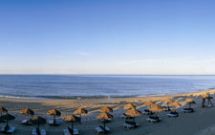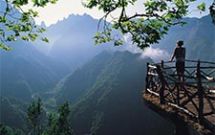Results
Number of results: 223
-
 OtherThe Santiago Route - BragaThe administrative capital of a province that covered regions including Galicia and the Minho and one of oldest bishopdoms, Braga forms the beginning of one of the Routes of Santiago. This was once a matter of great rivalry as in the 11th century, (...)
OtherThe Santiago Route - BragaThe administrative capital of a province that covered regions including Galicia and the Minho and one of oldest bishopdoms, Braga forms the beginning of one of the Routes of Santiago. This was once a matter of great rivalry as in the 11th century, (...)
-
 OtherSalinas da Fonte da BicaOn the slopes of the Serra dos Candeeiros, around 3 kms from Rio Maior, the salt pans are located in a large valley next to the Fonte da Bica, in a place known as Marinhas do Sal. The salt pans cover the ground with a white/grey blanket of (...)
OtherSalinas da Fonte da BicaOn the slopes of the Serra dos Candeeiros, around 3 kms from Rio Maior, the salt pans are located in a large valley next to the Fonte da Bica, in a place known as Marinhas do Sal. The salt pans cover the ground with a white/grey blanket of (...)
-
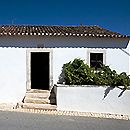 OtherCasas dos PastorinhosThe three shepherd children to whom Our Lady appeared - Lúcia and her cousins, Francisco and Jacinta - were born in the small village of Aljustrel, around 2 kms from the sanctuary of Fátima. The single-storey cottages formerly inhabited by the (...)
OtherCasas dos PastorinhosThe three shepherd children to whom Our Lady appeared - Lúcia and her cousins, Francisco and Jacinta - were born in the small village of Aljustrel, around 2 kms from the sanctuary of Fátima. The single-storey cottages formerly inhabited by the (...)
-
 OtherBridges in the Douro estuaryD. Maria Pia BridgeDesigned by the engineer, Gustave Eiffel, this bi-articulated arched railway bridge, measuring 352.875m long and 61 m high, was inaugurated in 1877 by the Royal family. It operated until 1991, on which date the railway service (...)
OtherBridges in the Douro estuaryD. Maria Pia BridgeDesigned by the engineer, Gustave Eiffel, this bi-articulated arched railway bridge, measuring 352.875m long and 61 m high, was inaugurated in 1877 by the Royal family. It operated until 1991, on which date the railway service (...)
-
 OtherCastelo Branco EmbroideryKnown to have been in production between the 17th and 19th centuries, the first reference to this local style was made by Jaime Lopes Dias, at the 4th Beirão Congress held in Castelo Branco in 1931. He called for greater recognition of this form of (...)
OtherCastelo Branco EmbroideryKnown to have been in production between the 17th and 19th centuries, the first reference to this local style was made by Jaime Lopes Dias, at the 4th Beirão Congress held in Castelo Branco in 1931. He called for greater recognition of this form of (...)
-
 OtherPraça do RossioReborn out of the wreckage of the 1755 earthquake, this lovely Lisbon square marks the northern reach of the Pombaline Downtown. It stretches out in a quadrilateral form dominated by the neo-classical harmony of the D. Maria II Theatre, built on the (...)
OtherPraça do RossioReborn out of the wreckage of the 1755 earthquake, this lovely Lisbon square marks the northern reach of the Pombaline Downtown. It stretches out in a quadrilateral form dominated by the neo-classical harmony of the D. Maria II Theatre, built on the (...)
-
 OtherThe Portuguese DiscoveriesIn the reign of King João I (1385-1433)1415 - Conquest of Ceuta1418 - João Gonçalves Zarco and Tristão Vaz discover the island of Porto Santo1419 - João Gonçalves Zarco and Tristão Vaz discover Madeira1427 - Diogo de Silves discovers the Azores In (...)
OtherThe Portuguese DiscoveriesIn the reign of King João I (1385-1433)1415 - Conquest of Ceuta1418 - João Gonçalves Zarco and Tristão Vaz discover the island of Porto Santo1419 - João Gonçalves Zarco and Tristão Vaz discover Madeira1427 - Diogo de Silves discovers the Azores In (...)
-
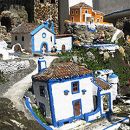 OtherJosé Franco’s typical VillageClose to Mafra, you have the chance to discover a typical village from Lisbon’s “saloio” region. It is made entirely of clay and has been built in a natural size, being the work of the Portuguese sculptor José Franco.In the village of Sobreiro, (...)
OtherJosé Franco’s typical VillageClose to Mafra, you have the chance to discover a typical village from Lisbon’s “saloio” region. It is made entirely of clay and has been built in a natural size, being the work of the Portuguese sculptor José Franco.In the village of Sobreiro, (...)
-
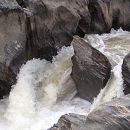 OtherPulo do LoboPulo do Lobo (literally Wolf`s Leap) is a waterfall located at an altitude of between 33 and 35 metres in a very narrow gorge in the River Guadiana. The difference in levels is caused by the effects over time produced by the various geological (...)
OtherPulo do LoboPulo do Lobo (literally Wolf`s Leap) is a waterfall located at an altitude of between 33 and 35 metres in a very narrow gorge in the River Guadiana. The difference in levels is caused by the effects over time produced by the various geological (...)
-
 OtherMercado Cultural do CarandáDesigned by the architect, Eduardo de Souto Moura and built between 1980 an older market, but was never actually used to sell foodstuffs. After various unsuccessful attempts to reanimate the space, Braga Municipal Council decided to reconvert it, (...)
OtherMercado Cultural do CarandáDesigned by the architect, Eduardo de Souto Moura and built between 1980 an older market, but was never actually used to sell foodstuffs. After various unsuccessful attempts to reanimate the space, Braga Municipal Council decided to reconvert it, (...)


